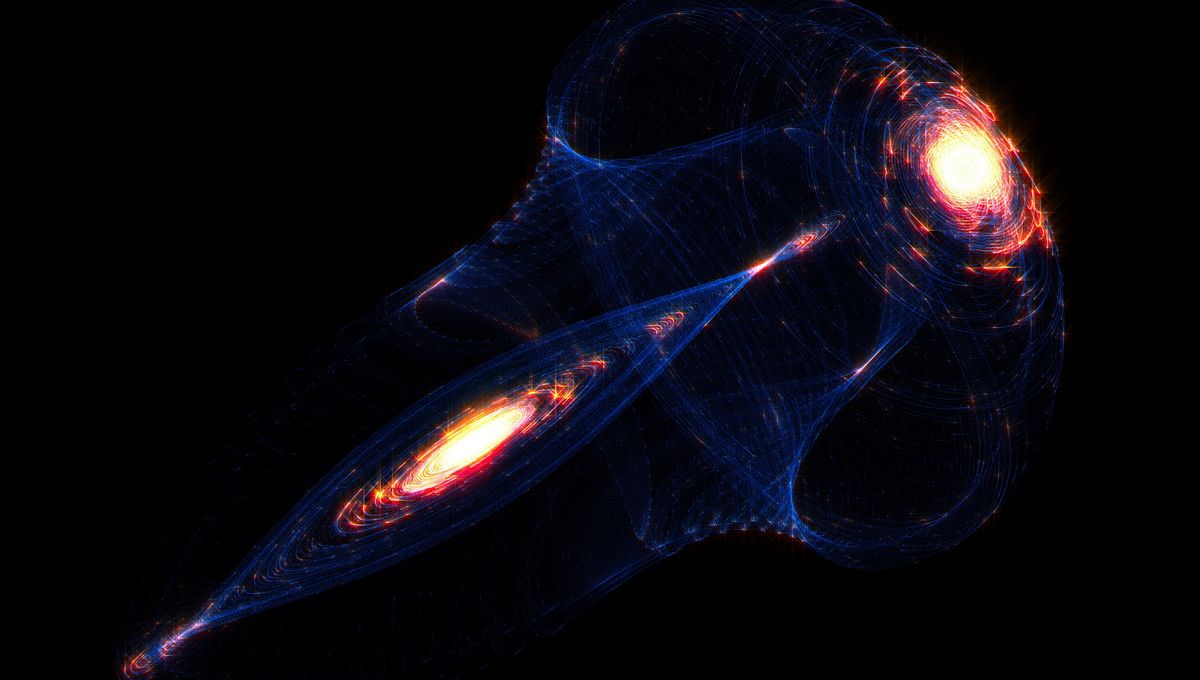
Astronomers might be on the verge of observing an incredible event: Two supermassive black holes are on the brink of a collision, and a new model suggests that this might happen not over cosmic timescales but within the next three years. Observing such an event would provide incredible insights into many fields of physics related to black holes.
Since 2015, gravitational waves from merging black holes (and neutron stars) have been observed by LIGO and Virgo. However, those were small black holes, that had the mass of big stars. This work instead focuses on supermassive black holes. As reported in Astronomy & Astrophysics, researchers believe that a pair of them are inside galaxy J1430+2303 and the two have a combined mass of 200 million suns. That’s over 45 times the mass of Sagittarius A*, the supermassive black hole at the core of the Milky Way.
The gravitational waves emitted by supermassive black hole collisions can’t be detected yet with our observatories, but such an event is expected to release a lot of high-energy particles and light. Emissions from J1430+2303 have set the team on the idea that the merger is imminent. Recent observations of the potential pair suggested that the emission from the interaction repeats more often – and their model suggests that the collision is nigh.
“A careful check of its optical light curves from the Zwicky Transient Facility (ZTF) then revealed unique chirping flares, with a reduced period from about one year to only three months by the end of 2021. The flares can be ideally interpreted as emissions from plasma balls that are kicked out from the primary SMBH accretion disk by an inspiraling secondary SMBH during disk crossings. We have developed a trajectory model to explain the period evolution and predicted that the binary would merge within three years, making multi-wavelength follow-up observations rather pressing and exciting,” the authors wrote in the paper.
The team argues that the observations are best explained by the binary supermassive black holes but they have not found what they refer to as “the smoking gun” that would prove that there are two black holes there. This is the emission of excited iron and potassium present in the disk that surrounds the black hole. The emission is seen, but the quality is not high enough to detect changes and prove that it is from two black holes and not one.
Observations of this galaxy continue – and we might find out very soon if the team is correct.
Source Link: We May Actually Get To Watch Two Supermassive Black Holes Collide In 3 Years' Time